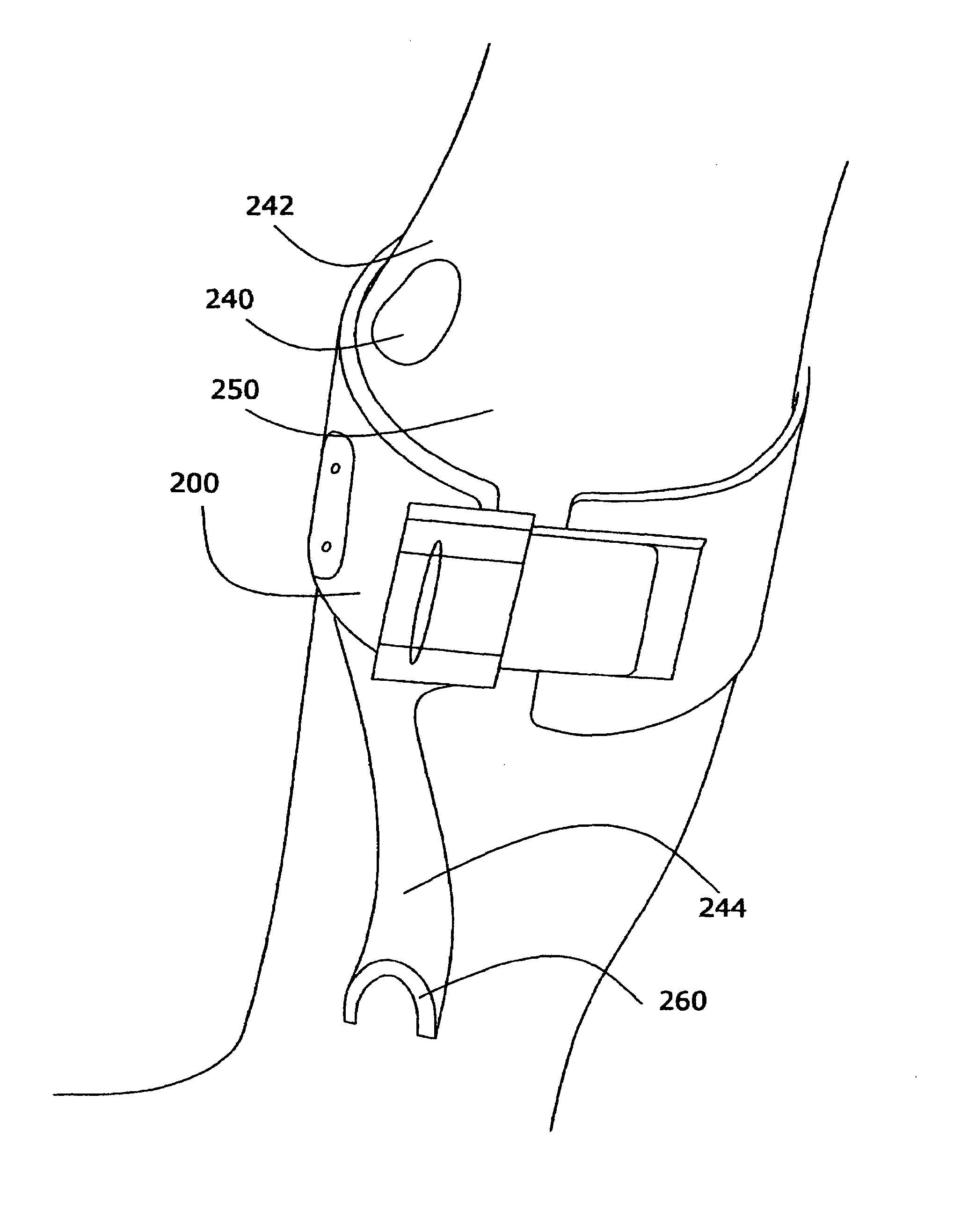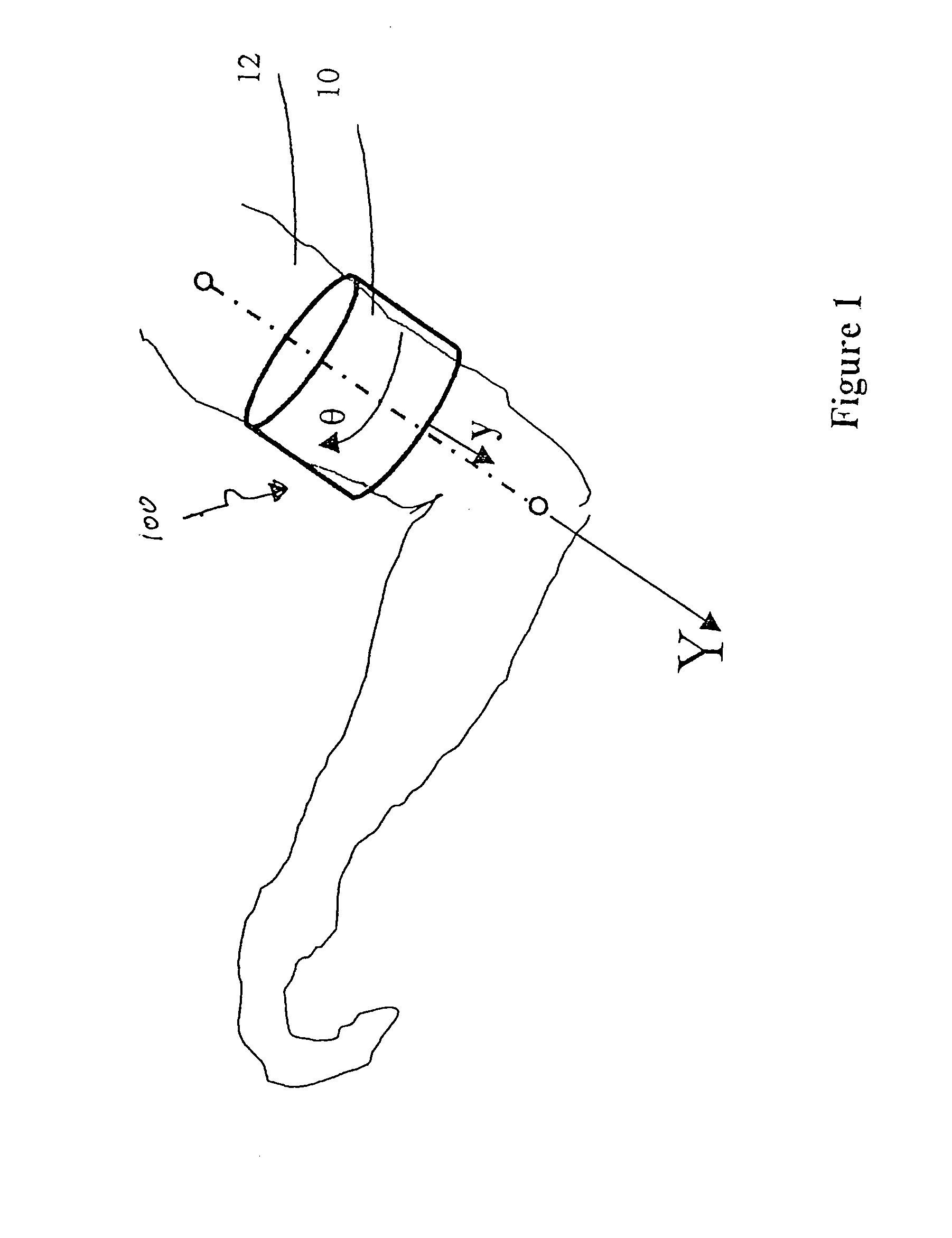Surface neuroprosthetic device having a locating system
a neuroprosthetic device and surface technology, applied in the field can solve the problems of limited use of surface neuroprosthetic devices, difficult electrode positioning, and difficult electrode placement, and achieve the effect of convenient, repeatable positioning of the device, and accurate electrode placemen
- Summary
- Abstract
- Description
- Claims
- Application Information
AI Technical Summary
Benefits of technology
Problems solved by technology
Method used
Image
Examples
Embodiment Construction
[0083]The present invention is a neuroprosthetic device for functional electrical stimulation of impaired limbs having a locating system for accurate, facile, and repeatable positioning of the device on the activating points of the muscles.
[0084]As used herein in the specifications and in the claims section that follows, the tern “locating system” or “locator” refers to a system for accurate, fast and repeatable positioning of a FES device on the limb of a patient. The locating system assures correct position and orientation of a rigid or semi-rigid exoskeleton relative to the limb, thereby positioning the electrodes integrated into the device in an accurate, fast and repeatable manner over the sites selected to activate the limb muscles.
[0085]The principles and operation of the present invention may be better understood with reference to the drawings and the accompanying description.
[0086]Before explaining at least one embodiment of the invention in detail, it is to be understood t...
PUM
 Login to View More
Login to View More Abstract
Description
Claims
Application Information
 Login to View More
Login to View More - R&D
- Intellectual Property
- Life Sciences
- Materials
- Tech Scout
- Unparalleled Data Quality
- Higher Quality Content
- 60% Fewer Hallucinations
Browse by: Latest US Patents, China's latest patents, Technical Efficacy Thesaurus, Application Domain, Technology Topic, Popular Technical Reports.
© 2025 PatSnap. All rights reserved.Legal|Privacy policy|Modern Slavery Act Transparency Statement|Sitemap|About US| Contact US: help@patsnap.com



